St. Vincent’s Project: Novenas for a Lost Hospital
St. Vincent’s Project, Novenas for a Lost Hospital, is inspired by those who dedicated their life to care and those who were lost. Guided by the character of St. Elizabeth Seton of the Sisters of Charity, the piece theatrically explores the 161-year history of the hospital. Audiences first meet in the garden of St. John’s in the Village, travel into Rattlestick for the play itself, and then travel into the streets of the West Village in song for the epilogue. This project uses theater as a vehicle to remember, to honor, and to celebrate the life impact of St. Vincent’s Hospital.
N. Scott Johnson collaborated with artist and writer James Scruggs to create the Prologue and Epilogue, the public performances pieces that bookend a play written by Cusi Cram performed on the Rattlestick stage. Audience members enter the courtyard of St. John’s through a horse passage from W 11th Street. Instead of programs, they are given models of various buildings that represent the original St. Vincent’s Hospital block, each with their own unique history. Guided by nuns, music and dance, the audience assembles a model of the St. Vincent’s in the courtyard of the church, receive battery operated candles and engage with nuns as they work, pray, and instruct on the prevention of Cholera and HIV/AIDS before assembling in the theater.
At the end of the play, the doors to the theater open to reveal the Stonewall Chorale singing Wedding March by Meredith Monk. The cast of the play leads the audience on a procession through the West Village to St. Vincent’s Triangle Park, guided by shepard nuns and accompanied by the Chorale. Along the way, the audience is serenaded by an Irish Singer, waits for traffic lights within a ring around the rosy dance and do a call and response in Creole, inspired by one of the characters in the play. At the entrance to the Park, the Stonewall Chorale lines up on two sides creates a tunnel of sound that recalls the tunnel under 7th Avenue that was used to remove the bodies for the AIDS ward in St. Vincent’s Hospital to a pick up area that is now the Park. The audience walks through the tunnel to arrive on the lawn of the park where the model of St. Vincent’s hospital has been assembled facing the now lost hospital. Surrounding the model, dancing nuns perform a farewell dance to the hospital, cast members sing The Lord’s Prayer and ceremoniously place a sheet over the model of the hospital now resembling a corpse on a gurney. One by one, audience members place their candles on the body of the hospital as the performance fades into the night and the audience lingers to share experiences.
“Survivors of the Titanic had been brought here. Ambulances rushed to the Triangle Shirtwaist Factory fire. Babe Ruth had beamed from his St. Vincent’s hospital bed. Dylan Thomas had given up the ghost here. Edna St. Vincent Millay was named after the place. The hospital was an essential hub for survivors of 9/11 and a place where the city spontaneously confronted its communal grief and disorientation. And, pre-eminently, St. Vincent’s became the epicenter of AIDS research and treatment on the East Coast.”
Guy Lancaster, Dramaturge
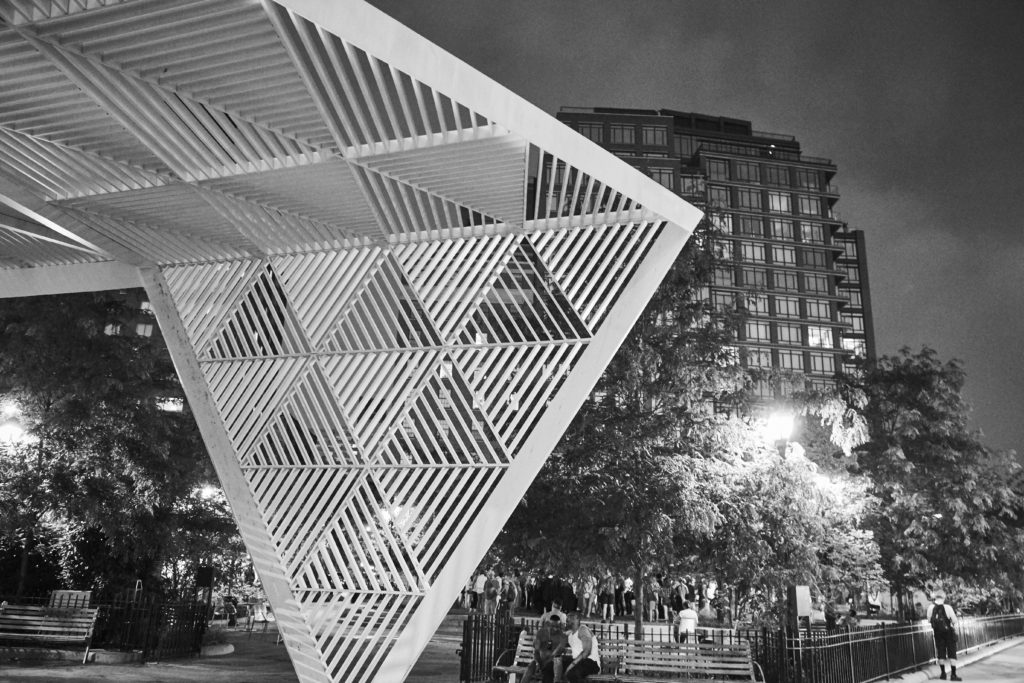
Epilogue, St. Vincent’s Triangle Park. End of performance as seen from the NYC AIDS Memorial
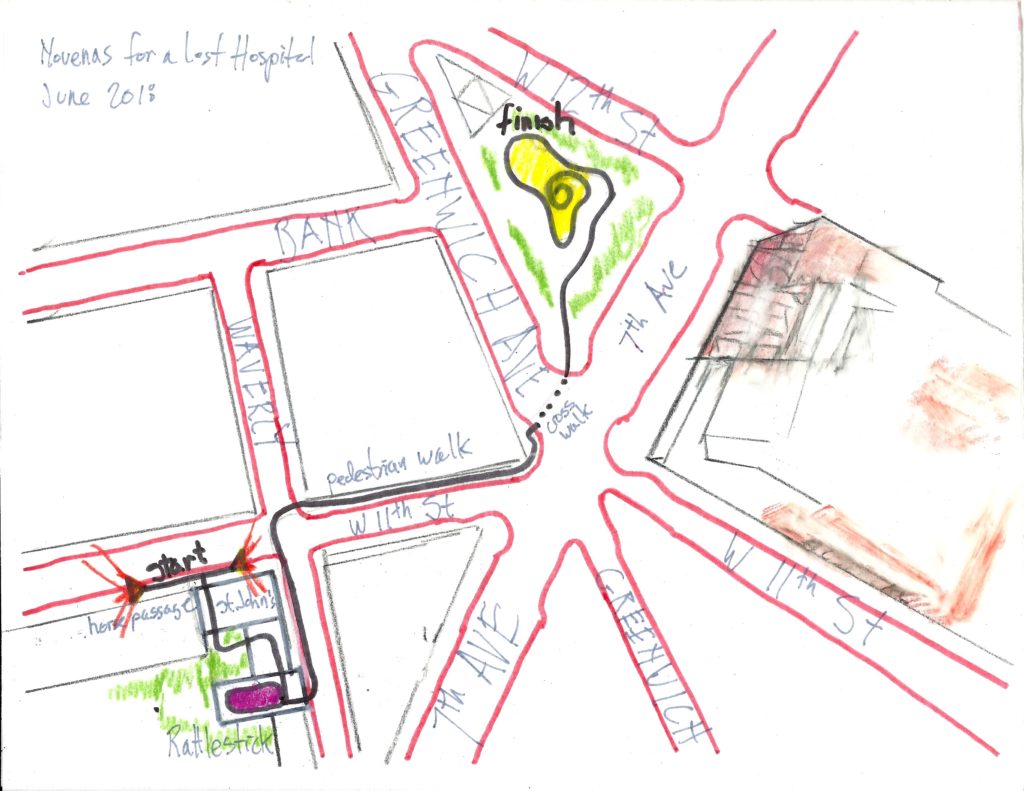
Audience Procession. The performance begins at the entrance to a horse passage on West 11th Street into a courtyard of St John’s church, through the church, into the Rattlestick Theater then back out along W 11th Street and into St. Vincent’s Triangle Park.
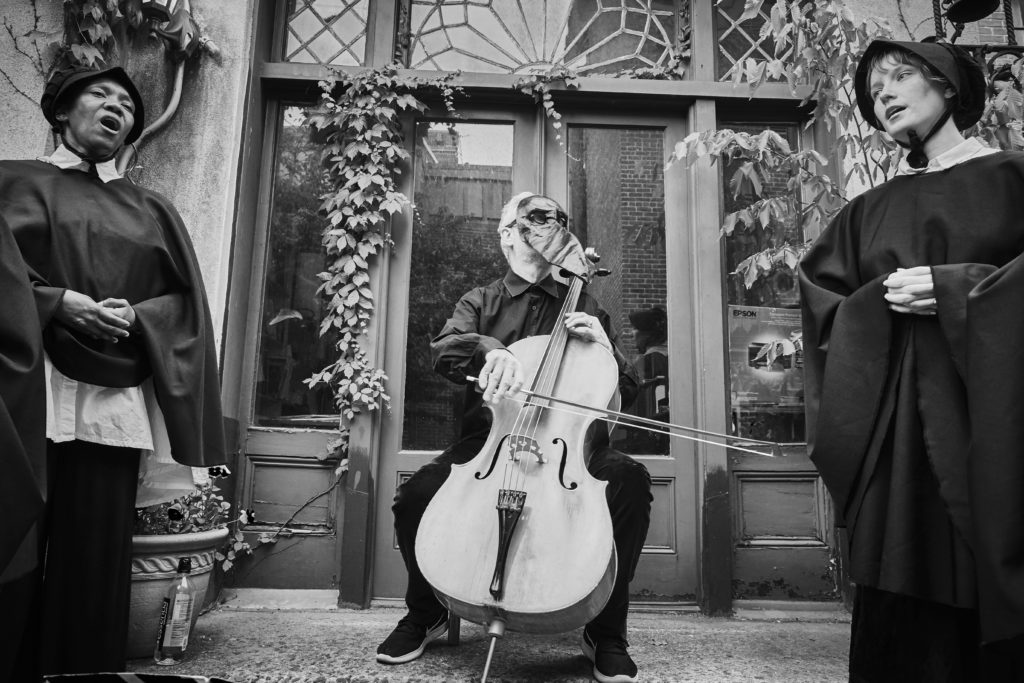
Prologue, St. John’s of the Village courtyard. Audience members enter the performance through the a horse walk from W 11th Street into the church courtyard. In the narrow passage 3 nuns are asking questions and praying to sounds of stable horses. Upon entering the courtyard, 3 nuns are singing in Latin accompanied by a cellist dressed as a 17th century plague doctor.
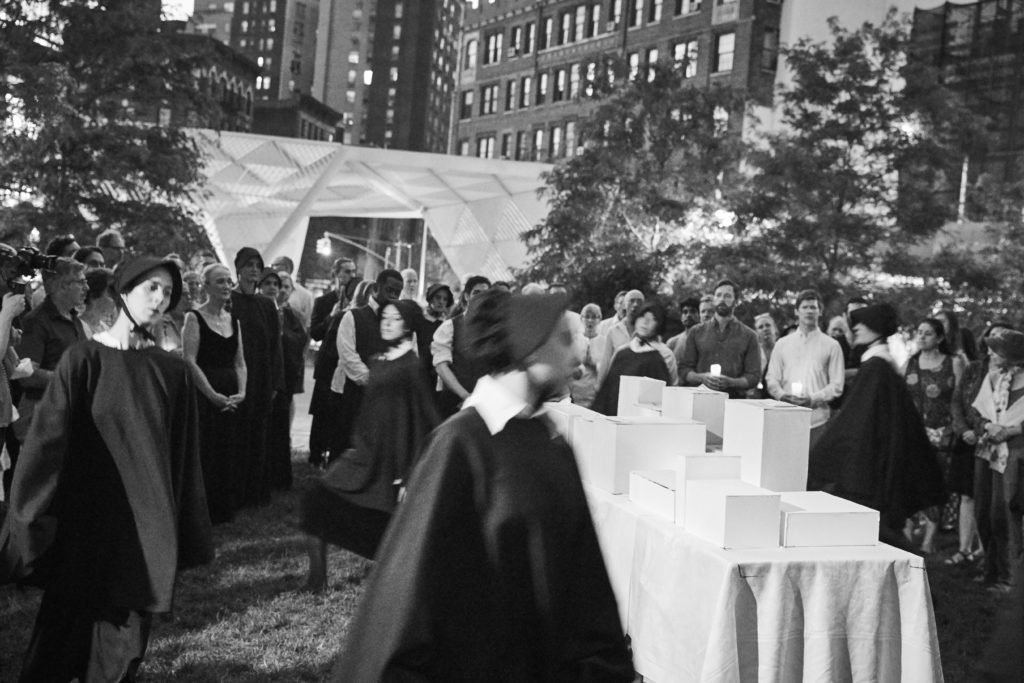
Epilogue, St. Vincent’s Triangle Park. The performance ends on the lawn in St. Vincent’s Park, where the actors, audience, choir and dancers come together to say goodbye to the lost hospital. A model of the hospital block, built by the audience at the beginning of the performance re-appears at the end.

Epilogue with cast and audience in St. Vincent’s AIDS Memorial Triangle Park
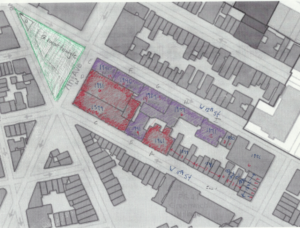
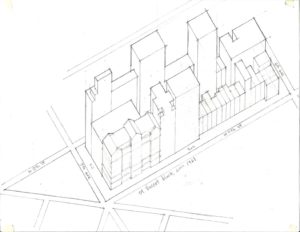
St. Vincent’s Block circa 1890 adjacent to the St. Vincent’s AIDS Memorial Triangle Park